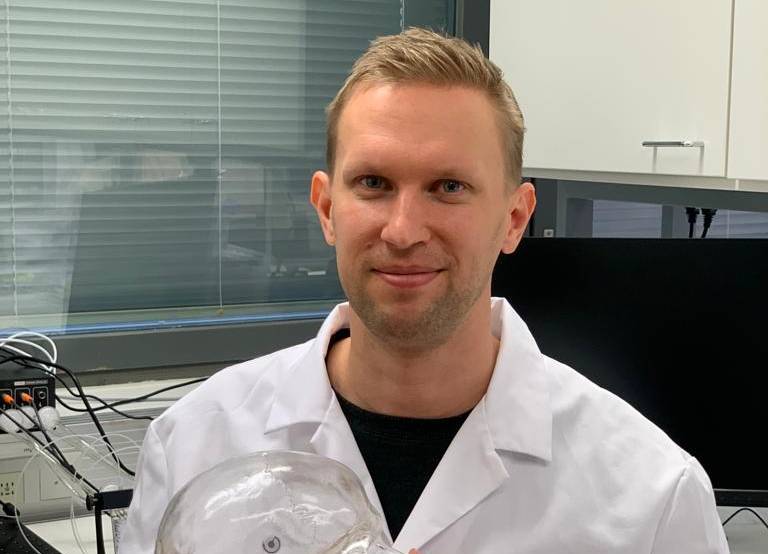Not knowing how well an injury is healing is painful (often literally) for the many who have had injuries requiring surgery. Instead of waiting weeks for the control visit to the doctor, what if one could simply monitor healing at home with a simple reader device. A solution could be an implantable sensor that degrades in the body after it is no longer needed. Aleksi Palmroth in Minna Kellomäki’s group has studied implantable bioresorbable sensors in his PhD work. He will defend his dissertation today.
How does the sensor technology that you have developed sit in the big picture? Are there already bioresorbable sensors used in implants?
There are no bioresorbable implantable sensors on the market. I consider them as a niche tool for very specific applications. They are of course suitable for temporary measurements only, for example, detecting infections in an early phase or monitoring tissue healing after surgery.
What were the biggest obstacles in developing the sensors?
It was the match in the sensor structure and available processing methods for delicate bioresorbable materials. Any sensor structure with more than two layers requires innovative solutions compared to conventional microfabrication methods, that typically utilize high heat or solvents.
You primarily concentrated on implantable sensors. Could the sensors you have developed be useful in tissue engineering technologies?
The basic principles are valid for tissue engineering applications as well. The sensors could monitor healing processes or implant performance if embedded into tissue engineering scaffolds. One example in laboratory conditions could be monitoring the degradation of various biopolymers or the formation of bone-like layers on bioactive glasses.
Hot topic, would you see a future in 3D printing these sensors directly into the 3D cell structures?
3D printing could be possible, but it would require a method for printing conductive structures such as metals, or metal wire inside a polymer shell. This could even provide advantages in the fabrication process because the metal wires would be automatically electrically insulated.
What does your future hold career wise?
I am developing bio-based and biodegradable composites at Arctic Biomaterials, which utilize dissolvable glass fiber reinforcements in biodegradable polymers. Our company has strong materials for bioresorbable implant applications, but also for replacing fossil oil-based plastics in technical applications. I am working at the technical business unit, and it has been very interesting to see so many different applications for plastics with different requirements.
Defense event
19/11/2021 12:00 – 16:00
Sähkötalo building auditorium S2, address: Korkeakoulunkatu 3.
Custos Minna Kellomäki
Opponent Professor Reijo Lappalainen
Remote connection
https://tuni.cloud.panopto.eu/Panopto/Pages/Sessions/List.aspx#folderID=%228e118f88-2483-42f6-8aff-adc600c47d6c%22
The dissertation is available online at
https://trepo.tuni.fi/handle/10024/134875
Doctoral Programme in Biomedical Sciences and Engineering
Photo
Timo Salpavaara

